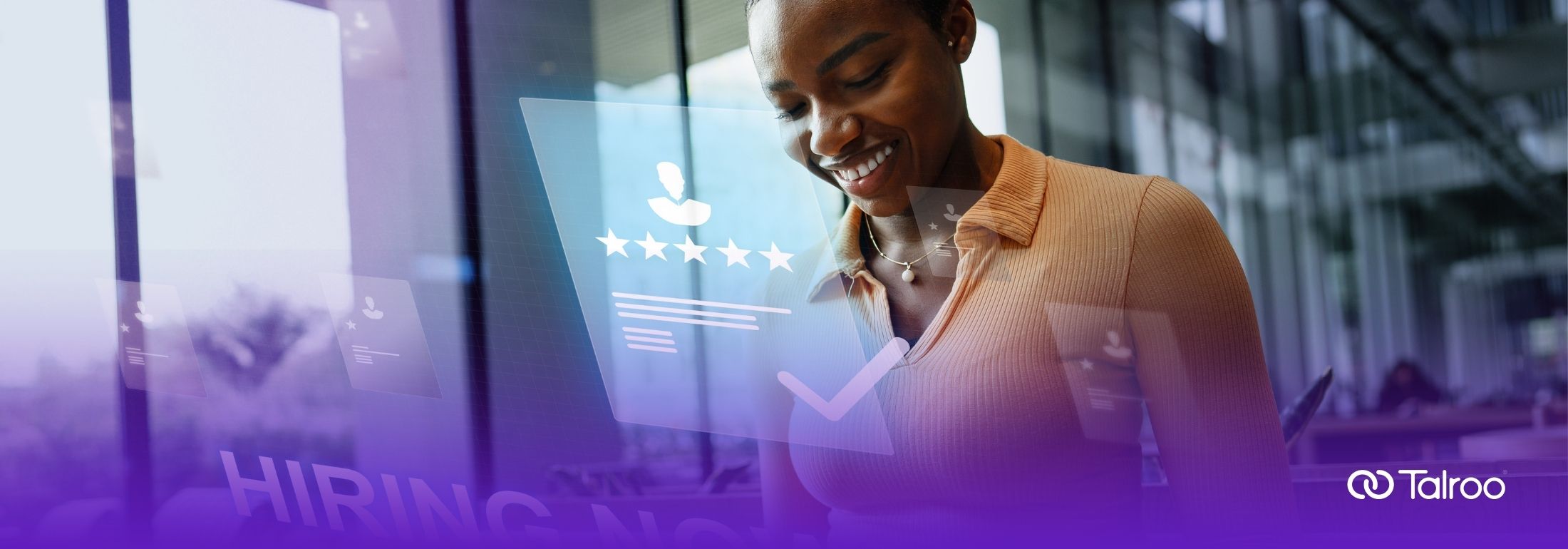
How to Avoid the Red Flags That Reveal ‘Low Effort AI’
Artificial intelligence is transforming how organizations create content, from job postings and recruiting emails to blog articles and employer brand messaging. For HR and talent acquisition teams, AI tools promise speed, scalability, and fresh ideas. But there’s a catch: as AI-generated content becomes more common, it’s also easier than ever to spot when it has been done wrong.
Low-effort AI content — specifically content produced without the right prompts, fact-checking, or human oversight — stands out for all the wrong reasons. It’s generic, outdated, off-brand, and sometimes outright wrong. In recruiting and employer branding, this kind of content can do real damage. It can drive away qualified candidates, harm your employer reputation, and even lead to search engine penalties that hurt your visibility.
If you are using AI to support your hiring and branding efforts, it is critical to understand the red flags of low-effort AI and how to avoid them.
Related: Decoding AI: The Recruiter’s Glossary to Artificial Intelligence in Hiring
The Red Flags of Low-Effort AI
1. A Generic, One-Size-Fits-All Tone
One of the biggest giveaways of AI content done poorly is a bland, interchangeable tone. If your job posting could apply to any company in any industry, you have lost the opportunity to stand out.
AI tools often default to safe, neutral language, but employer branding thrives on personality and differentiation. Candidates want a sense of what it is like to work at your company, not a string of clichés about “fast-paced environments” and “dynamic teams.”
Example: Compare “We’re seeking a results-oriented team player to join our growing company” to “At Talroo, every project we take on is a team effort, and every win is shared. We’re looking for a problem-solver who thrives on collaboration and wants their work to make an impact.” The first sentence could belong to anyone; the second tells your story.
2. Lack of Fact-Checking
AI can generate plausible-sounding information that is entirely incorrect. This is often called “hallucination” in AI terms, and it happens because large language models predict text based on patterns, not truth.
If you publish AI-generated content without verifying details, you risk embarrassing mistakes. In the HR space, that might look like citing outdated labor laws, using incorrect job outlook statistics, or referencing benefits that your company does not actually offer.
The Chicago Sun-Times recently illustrated this risk in a very public way. The newspaper published an “AI-generated reading list” that included non-existent book titles. Readers quickly spotted the errors, and the publication faced backlash for its lack of editorial oversight. In recruiting, similar missteps can erode candidate trust just as quickly.
3. Outdated Information
Because AI models are trained on existing data sets, they may not include the most recent information — especially if the tool does not pull from real-time sources. This is a problem if you are relying on AI for market data, salary benchmarks, or industry trends.
Imagine a candidate reading your blog post on “Top Skills for 2025” only to find skills lists pulled from 2020 reports. Outdated content signals that your company is out of touch, and it may hurt your rankings in search engines, which prioritize freshness and accuracy.
4. Zero Brand Voice
AI can mimic tone to some extent if you give it examples, but it rarely nails the nuances of your unique brand voice without human intervention. Brand voice is more than word choice. It is the personality, pacing, and point of view that make your messaging recognizable.
Low-effort AI content often reads like it could have come from anywhere. That is a missed opportunity, because brand voice is what makes your culture and values feel real to potential candidates. Without it, your employer brand will blend into the crowd.
Why Low-Effort AI Hurts More Than It Helps
Search Engine Risks: Search engines like Google are increasingly sophisticated at detecting low-quality or unoriginal content. While AI-generated content is not automatically penalized, search engines do reward originality, expertise, and trustworthiness. If your AI-generated content is generic, factually questionable, or duplicated from other sources, it could hurt your rankings.
Lower rankings mean fewer candidates will find your job postings, career site, or employer brand content in the first place.
Candidate Perception and Trust: Job seekers are savvy. Many can now recognize AI-generated content, especially when it is full of vague phrases, repetitive structures, or mismatched details. If your content feels automated and impersonal, it can send the message that your company is not invested in the hiring process—or worse, in its people.
Recruiting is about relationships, and trust is the foundation. Once trust is damaged, it is difficult to recover.
Missed Opportunities for Connection: Low-effort AI content may be “good enough” to fill space, but it will not inspire action. Whether you want candidates to apply, employees to share posts, or the media to cover your workplace initiatives, generic content will not make the cut. The whole point of employer branding is to differentiate yourself; low-effort AI does the opposite.
Related: Ethical AI in Recruiting: Balancing Innovation with Privacy and Compliance
How to Avoid Low-Effort AI in Recruiting and Employer Branding
1. Start With Strong Prompts
AI tools are only as good as the instructions you give them. Vague prompts lead to vague results. Instead of saying “Write a job posting for a marketing manager,” say “Write a job posting for a marketing manager at a fast-growing SaaS company known for its collaborative culture and focus on professional development. Highlight our flexible work options and commitment to mentorship.”
The more context you provide, the more relevant and brand-aligned the output will be.
2. Always Add a Human Layer
Think of AI as a junior assistant, not a final author. Use AI to generate ideas, outlines, or first drafts, but always have a human edit for accuracy, voice, and nuance. Fact-check all claims, update statistics, and ensure the content reflects your current policies and culture.
If you do not have internal capacity, consider outsourcing the editing to a content partner or freelance writer who understands your brand and audience.
3. Feed AI Your Brand Guidelines
If you have a style guide, past high-performing content, or examples of on-brand messaging, provide these to the AI tool as part of your prompt. This can help the tool better match your tone and structure.
For example, you might say: “Here are three past blog posts that reflect our brand voice. Use a similar style for a post about the benefits of working at our company.”
4. Use AI for Research, But Verify
AI can be a useful starting point for gathering ideas, but it should never be your only source. Use it to summarize trends, then cross-check the data with reputable sources. For recruiting content, that might mean verifying job outlook data from the Bureau of Labor Statistics or salary ranges from up-to-date industry reports.
5. Stay Current With AI Capabilities and Limits
The AI landscape is evolving quickly. Tools are improving, but so are detection methods and user expectations. Keep up with AI trends, especially as they relate to search engine guidelines and content best practices. What passes today may be flagged as low-quality tomorrow.
Related: AI-Powered Personalization: Revolutionizing Employee Engagement in Retail
The Bottom Line: Quality and Authenticity Still Matter
AI is a powerful tool for recruiters and employer brand teams, but it is not a replacement for human judgment. Candidates can spot when content has been phoned in, and so can search engines.
By recognizing the red flags of low-effort AI — generic tone, lack of fact-checking, outdated info, and missing brand voice — you can avoid the pitfalls that lead to lost trust and missed opportunities. The goal is not to eliminate AI from your content strategy but to integrate it in a way that enhances, rather than diminishes, the quality and authenticity of your message.
In recruiting, the competition for talent is too fierce to risk sending the wrong signal. Use AI wisely, edit ruthlessly, and remember that the human touch is still your strongest hiring advantage.




